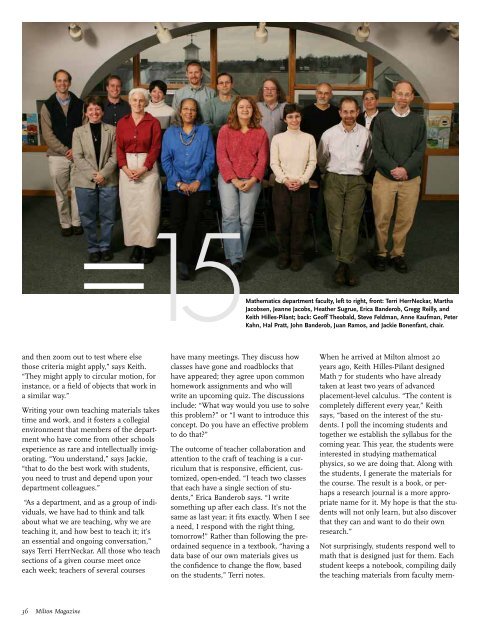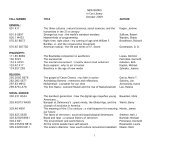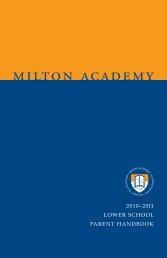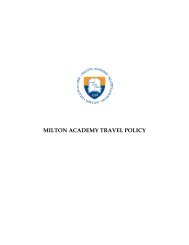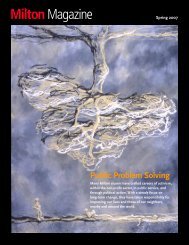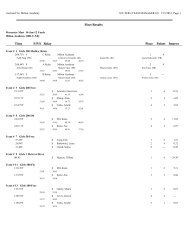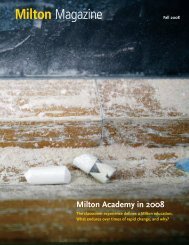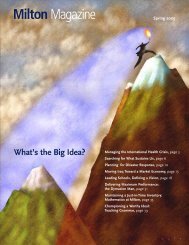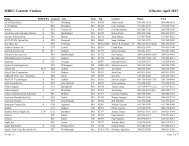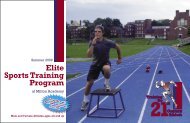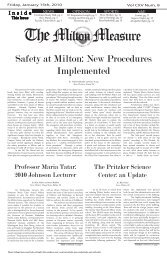Mathematics conglomerate
Mathematics conglomerate
Mathematics conglomerate
You also want an ePaper? Increase the reach of your titles
YUMPU automatically turns print PDFs into web optimized ePapers that Google loves.
=15<strong>Mathematics</strong> department faculty, left to right, front: Terri HerrNeckar, MarthaJacobsen, Jeanne Jacobs, Heather Sugrue, Erica Banderob, Gregg Reilly, andKeith Hilles-Pilant; back: Geoff Theobald, Steve Feldman, Anne Kaufman, PeterKahn, Hal Pratt, John Banderob, Juan Ramos, and Jackie Bonenfant, chair.and then zoom out to test where elsethose criteria might apply,” says Keith.“They might apply to circular motion, forinstance, or a field of objects that work ina similar way.”Writing your own teaching materials takestime and work, and it fosters a collegialenvironment that members of the departmentwho have come from other schoolsexperience as rare and intellectually invigorating.“You understand,” says Jackie,“that to do the best work with students,you need to trust and depend upon yourdepartment colleagues.”“As a department, and as a group of individuals,we have had to think and talkabout what we are teaching, why we areteaching it, and how best to teach it; it’san essential and ongoing conversation,”says Terri HerrNeckar. All those who teachsections of a given course meet onceeach week; teachers of several courseshave many meetings. They discuss howclasses have gone and roadblocks thathave appeared; they agree upon commonhomework assignments and who willwrite an upcoming quiz. The discussionsinclude: “What way would you use to solvethis problem?” or “I want to introduce thisconcept. Do you have an effective problemto do that?”The outcome of teacher collaboration andattention to the craft of teaching is a curriculumthat is responsive, efficient, customized,open-ended. “I teach two classesthat each have a single section of students,”Erica Banderob says. “I writesomething up after each class. It’s not thesame as last year; it fits exactly. When I seea need, I respond with the right thing,tomorrow!” Rather than following the preordainedsequence in a textbook, “having adata base of our own materials gives usthe confidence to change the flow, basedon the students,” Terri notes.When he arrived at Milton almost 20years ago, Keith Hilles-Pilant designedMath 7 for students who have alreadytaken at least two years of advancedplacement-level calculus. “The content iscompletely different every year,” Keithsays, “based on the interest of the students.I poll the incoming students andtogether we establish the syllabus for thecoming year. This year, the students wereinterested in studying mathematicalphysics, so we are doing that. Along withthe students, I generate the materials forthe course. The result is a book, or perhapsa research journal is a more appropriatename for it. My hope is that the studentswill not only learn, but also discoverthat they can and want to do their ownresearch.”Not surprisingly, students respond well tomath that is designed just for them. Eachstudent keeps a notebook, compiling dailythe teaching materials from faculty mem-36 Milton Magazine


